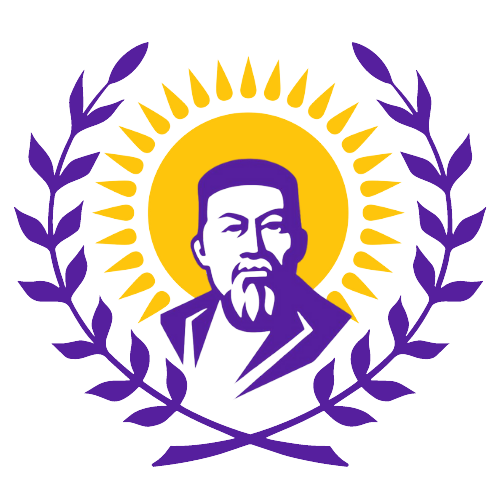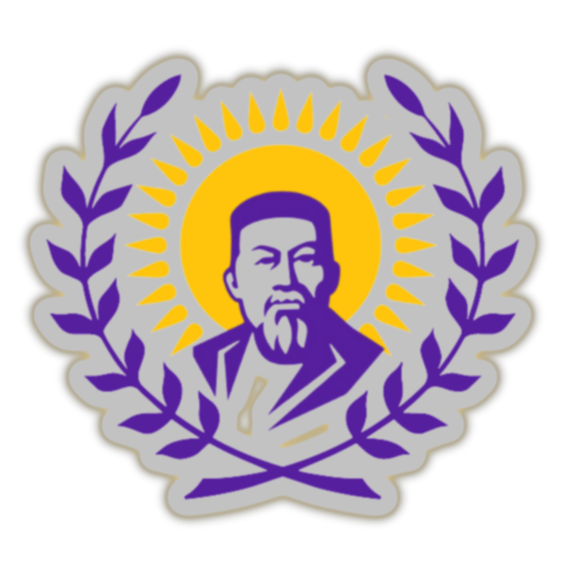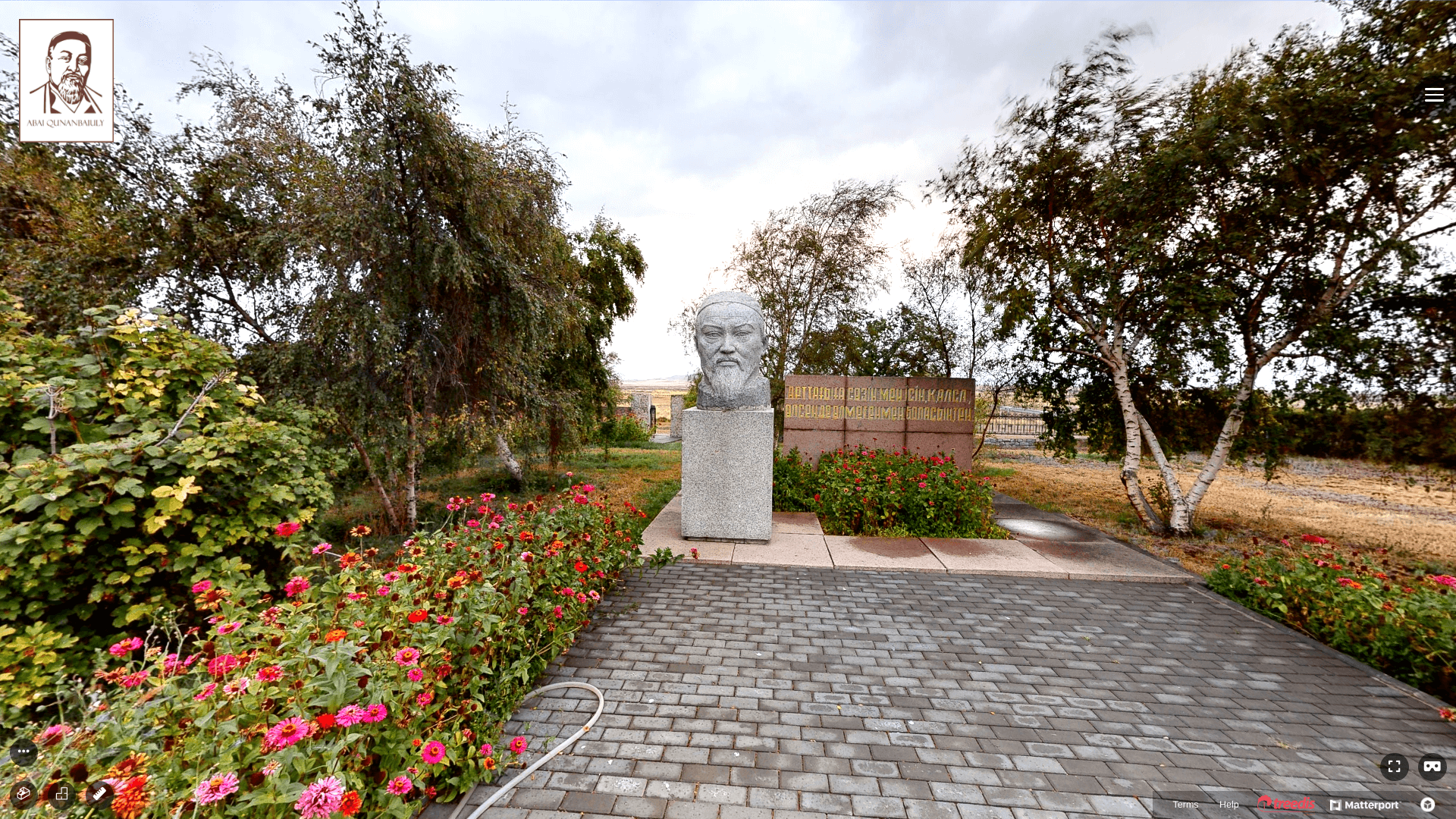The house-museum of the great Kazakh poet Abay Kunanbayev was first opened in 1940 by decision of the Soviet People’s Commisioner of KazSSR in honour of 95th anniversary celebration since the birth of the poet. Initially it was located in the house of Bekbay Baisov, and then from 1944 to 1967 it was in the house of Aniyar Moldabayev. This two-story mansion was built in the last quarter of the XIX century. This is the history of the mansion. It is known that, Abay, besides the strained creative work, involved in the public affairs, enlightenment and charity. He paid great attention to that, children of his relatives sought to have the knowledge, studied in the city, had them in tow. Aniyar Moldabayev was also one of his wards. By the insistence of Abay, Aniyar graduated in Russia and, having received the certificate of the lawyer, returned to his home. Coming to Semey, Abay often stayed in this house. A well-known mansion in the city has all reasons to be a memorial museum of Abay. It was not incidentally that in 1940 the choice as the object for creation of the museum stopped on this house. Its first director was a young talented writer Kayum Mukhamedkhanov. The location of the house has kept its old, almost primitive image. The museum is surrounded by the old century buildings. This corner has kept alive remembrance of the poet.
Eventually there is need to find a bigger premise for the museum. As a result, the museum was moved to the house, once belonged to the Russian merchants, Yershov brothers. According to some data, Abay occasionally stayed in this house and met with the exiled people to Siberia. On April 5, 1990, the museum of Abay was reorganized into the State historic-cultural and literary-memorial museum of Abay. In 1995, there was opened a new building in the territory of the museum, which was built in the east style. Here the mosque with the madrassa of Ahmet Rizy was transferred, where he studied in 1854-1859. A spirit of Muslim religious schools of the east was played in this building. Here you can also see the ancient books and manuscripts in Arabian, Persian, Turkish and Russian languages. The main halls of the museum were taken up by exhibits: “Аbay and his time”, “Seasons”, “The image of Abay in the Fine art”, “Poetic school of Abay”, “Abay and modernity”, “The east poems”, “The works of Abay”, “Abay is in the heart of the people “, “A hall of Souvenirs”, “The poem Iskander”.
In 1945, 180 km from Semei, in the countryside Zhidebai was opened the house-museum, as the branch of the Semey literary-memorial museum of Abay. On the eve of the 125th anniversary of the poet, in 1970, the museum was renovated. The architectural appearance of the building has kept its original appearance. In the five rooms and three halls of the museum were shown the duffel things which were submitted by relatives and friends of Abay. Among them – books, photographs of those years, three stringed Abay’s dombra, household items and etc. Here are the photos of exiled friends of the poet.
Except the museum in Semei the museum-reserve includes: the museum of Auezov in the village of Borali, the house-museum of Abai in Zhidebai, the museum-mosque of Kokbai Zhanatayev, the museum of Shakir Abenov in the village of Kundyzy, the museum of Aset Naimanbayev in the village of Makanchi, and also the museum of “Alash leaders– M.Auezovа”, in the old building of the museum in the house of Aniyar Moldabayev.
The fund of the state museum-reserve of Abay is 18 255 depositary items. The exposition of the museum includes 7 halls located in the nineteenth century building, 10 halls in the new building. Among the exhibits – original documents, ethnographic and archive materials, characterizing an era of Abay, his public activities, the rarest editions of the east classics, the compositions of the Western philosophers, the memories of the poet’s contemporaries.
The exposition hall “Abai and his epoch” is about the life and times of Abai; about the social, economic, administrative and socio-political structure of the Kazakh society in the second half of the nineteenth beginning of twentieth centuries. This hall contains documentary materials, memoirs of contemporaries, and the works of Kazakhstani artists. All these exhibits reflect Abai’s social activities, his work, friendship with the exiled P.Mikhaeles, N.I.Dolgopolov, S.S. Gross, P.D.Lobanovskiy, his participation in the work of the Statistic Committee. The valuable exhibits are the items sent by Abai to the local museum through his friend Dolgopolov. Also the lifetime portrait of the poet written by P.D.Lobanovskiy is stored in this hall.
In the hall of “The image of Abai in the Fine art” is collected the pictures, sculptures, graphics, paintings of E.Sidorkin, I.Isabayev, M.Kisametdinov, N.Krutilnikov, A.Kasteev, Kh.Nauryzbayev,
E.Sergebayev and other artists who have been revealing the image and the world of Abai. The creativity of Abai is presented in the several halls of museum. A separate hall is dedicated to the lyrics, “Book of words” and “Octastich”. In the neighbouring wing it is presented the translations of Abai: Pushkin, Lermontov, Bunin, Tolstoy, Gete, Krylov, Bayron. In this part of the exhibition various editions of Abai are stored from the first publication in the newspaper “Dala ualayati”, to its translations into dozens of languages of the world. Another hall is taken for the poems “Masgudu”, “A legend about Azim”, “Iskander”. Unusually and modernly is decorated the hall telling about four well-known poems of Abai, united in the cycle “Seasons”. Six video projectors with audiovisual installation are set in this hall. The visitors of the museum can watch the eight minutes film about seasons, directed by Sarbasov.O. There was installed a panorama depicting white yurt with its internal rich furniture, household items and ethnography of Kazakhs’, furniture. This installation is devoted to the poem “Summer”.
In the hall of “Poetic environment of Abai” is collected various documents, portraits, photos, the works of pupils, followers of Abai, who were during life time in close contact with the poet. Among them are: Abai’s sons – Akilbai and Magauia; Turgul – a talented translator, Abai’s grandson; poet-satirist Aubakir; Kokbai Zhanatayev, Aset Naimanbiev, Aryp Tanibergenov, and also a poet, translator, philosopher, historian, composer Shakarim Kudaiberdiev. In the hall of “Abaytanu” is collected a confession life of the poet, the works of Akhmet Baytursynov, Alikhan Bukeikhanov, Mirzhakip Dulatov and certainly the materials introducing Mukhtar Auezov’s activities –is a writer and founder of Abaitanu. Here it is possible to find the photographs of the twentieth – fortieth, statements of Auezov about Abai, the poster of the performance “Abai” 1940.





